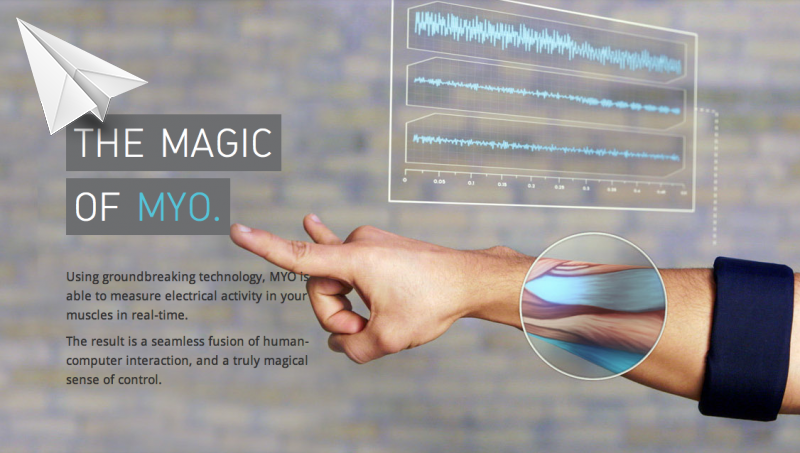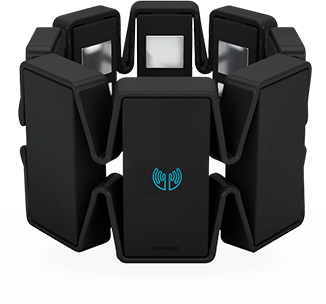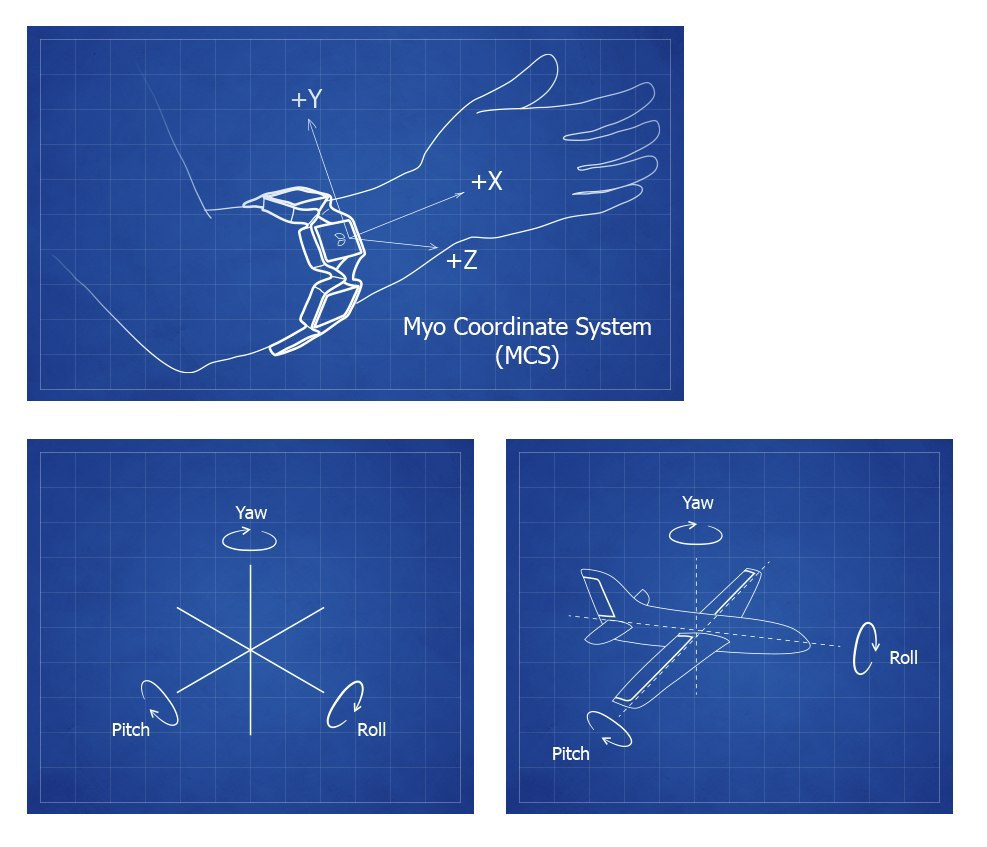MYO: how we made a paper airplane on the radio

Kirill Belyshev, programmer of the desktop and mobile application development team (@ kirill09): A lot of geeks work in our company. Very many and very geeks. Naturally, my colleagues follow the news of the hitech industry and often become one of the first owners of all sorts of interesting gadgets. Well, or make them yourself. As examples of offhand, you can bring the robot Romo , a fault indicator in the project and a home meteorological center .
Some time ago I also stumbled upon one wonderful project: the guys wanted to make a bracelet with which you can remotely control a computer and radio models. The device was called Myo.
')

The idea captured me, I placed the order one of the first, and then I waited a long wait. And recently, I received a cherished package at the post office. Having played around with the device, I told my colleagues about it. This topic is very interesting for them - we even decided to make a small video. I want to tell you about the results of our experiences with a wireless control device in this article.
Experiment. Use MYO to manage gadgets
Philip Panfilov, Mail.Ru Mail Programmer (@Ponf): A medium-sized bracelet. The rubber bridges connecting the Myo elements turned out to be rather tight, the bracelet would not fly off the arm even if it was waving strongly. The gadget is connected to the computer via a wireless (the same is obvious) USB receiver. Moreover, there are no controls on the bracelet, he himself recognizes that he has been put on his hand, and initiates a communication session.
After installing the proprietary application, I was shown a tutorial, with which I got an idea of how to use Myo. At first it was very unusual. All the time I wanted to find some button, I had to constantly remind myself that the device only understands hand gestures, and quite definite gestures. Tightly sitting on the arm, the bracelet registers weak electrical impulses during the contraction of certain muscles, and sends the corresponding commands to the computer. The built-in battery is charged using a USB cable.
Having experimented with managing iTunes and PowerPoint, I quickly realized that Myo deserves a more worthy and interesting use than switching songs. Upon reflection, I remembered that I had a PowerUp 3.0 paper airplane control module, once ordered on Kickstarter, that was idle. It is a small Bluetooth module with a propeller and steering wheel connected to it. But the most interesting thing is that for him there is a description of the control protocol via Bluetooth, so you can write your application. A great candidate for integration with Myo!
In order for this economy to work together, I needed to write a small application whose task is to translate the movements of my hand into commands to change the angle of the aircraft steering wheel and the speed of the propeller. I chose Objective C as the language and got down to business.
With Myo, everything turned out to be quite simple: there is an official SDK for it, which includes a framework that can be connected to an OS X application and then use the C ++ library to manage the bracelet. In addition, there are binders for Myo in all known and not so programming languages, so connecting the bracelet to the application was not difficult.
With PowerUp, everything turned out to be a bit more complicated, since there was nothing on the Internet that was available except for the description of the protocol and the Android application on GitHub. But nothing, armed with docks using the protocol and working with CoreBluetooth, I wrote a simple little library that allows you to connect to the airplane and control it through a simple interface. The code for the library is available on GitHub .
In the end, according to my idea, raising the hand was responsible for changing the speed of the propeller, tilting - for the steering angle of the yaw, well, in order to use the gesture recognition capabilities of Myo, I hung up the engine start on Fingers Spread, that is, on spreading fingers.

Luck didn’t immediately smile at me, I had to calibrate Myo several times, as well as tune the control parameters of the aircraft, before I managed to get a clear reaction to the hand movements.
Of course, a paper airplane cannot be called the ideal of a radio-controlled model. But still I managed to partially correct his flight with the help of Myo. My colleagues and I shot a video that I want to share with you. Now my friend's radio-controlled car, equipped with a full-fledged tiny ICE, is next in line.
Source: https://habr.com/ru/post/249861/
All Articles